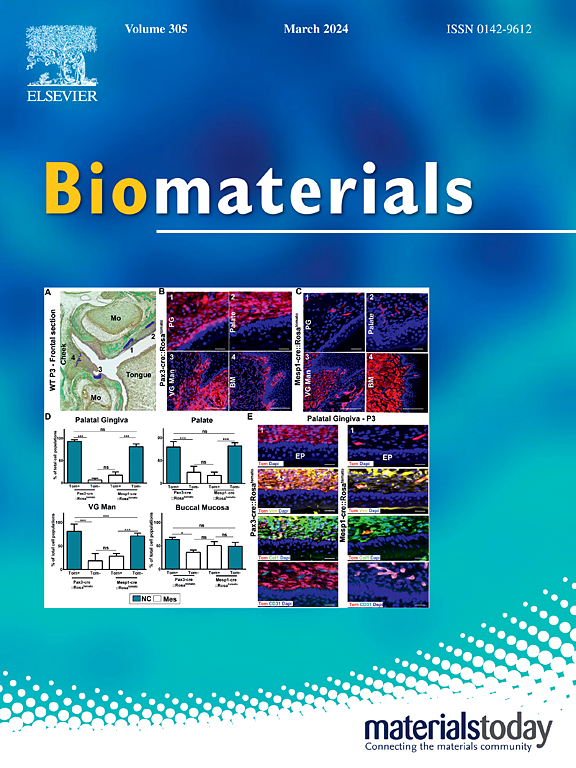Immunogenic cuproptosis in cancer immunotherapy via an in situ cuproptosis-inducing system
IF 12.8
1区 医学
Q1 ENGINEERING, BIOMEDICAL
引用次数: 0
Abstract
Cell death-based therapies combined with immunotherapy have great potential in cancer therapy. To further explore and apply the combined therapies, the immunogenicity of different cell death modes in colorectal cancer (CRC) was evaluated by a cause-and-effect framework encompassing 12 cell death modes. Results show robust correlations among cuproptosis, immunogenic cell death (ICD) and immunity in CRC, as observed in our in-house and other independent cohorts, which are substantiated by in vitro and in vivo experiments. Subsequent investigations demonstrate that cuproptosis induces endoplasmic reticulum stress, leading to the release of damage-associated molecular patterns from CRC cells and triggering the maturation of antigen-presenting cells. Moreover, for in vivo therapeutic approaches, an in situ cuproptosis-inducing system was devised, which can further strengthen the effects of immune cells. Through the combined analysis including single-cell RNA sequencing, cuproptosis is shown to mobilize cytotoxic T lymphocytes and M1 macrophages within the tumor microenvironment (TME). Additionally, co-treatment with Imiquimod, the TLR7 agonist, augments the anti-tumor immune responses induced by cuproptosis. Overall, we provide compelling evidence that cuproptosis induces ICD thus fostering an inflammatory TME, and the cuproptosis-based delivery system further promotes this inflammatory environment, demonstrating considerable potential for enhancing tumor therapy efficacy.
求助全文
约1分钟内获得全文
求助全文
来源期刊

Biomaterials
工程技术-材料科学:生物材料
CiteScore
26.00
自引率
2.90%
发文量
565
审稿时长
46 days
期刊介绍:
Biomaterials is an international journal covering the science and clinical application of biomaterials. A biomaterial is now defined as a substance that has been engineered to take a form which, alone or as part of a complex system, is used to direct, by control of interactions with components of living systems, the course of any therapeutic or diagnostic procedure. It is the aim of the journal to provide a peer-reviewed forum for the publication of original papers and authoritative review and opinion papers dealing with the most important issues facing the use of biomaterials in clinical practice. The scope of the journal covers the wide range of physical, biological and chemical sciences that underpin the design of biomaterials and the clinical disciplines in which they are used. These sciences include polymer synthesis and characterization, drug and gene vector design, the biology of the host response, immunology and toxicology and self assembly at the nanoscale. Clinical applications include the therapies of medical technology and regenerative medicine in all clinical disciplines, and diagnostic systems that reply on innovative contrast and sensing agents. The journal is relevant to areas such as cancer diagnosis and therapy, implantable devices, drug delivery systems, gene vectors, bionanotechnology and tissue engineering.
 求助内容:
求助内容: 应助结果提醒方式:
应助结果提醒方式:


